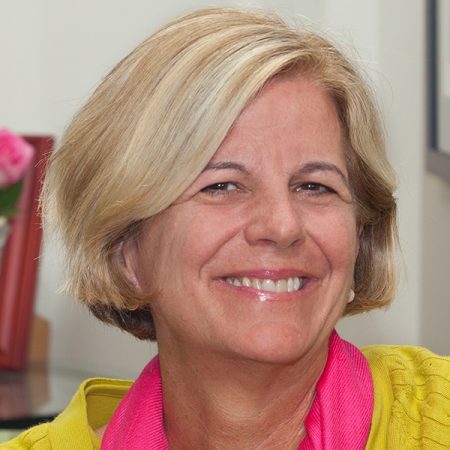
Mimi Graham’s work is never done.
But the director of Florida State University’s Center for Prevention and Early Intervention Policy can mark a milestone: The center’s Partners for a Healthy Baby Curriculum passed $10 million in sales in 2013, making it the university’s second most successful research endeavor behind the cancer drug Taxol.
“And we’re just itty bitty,” Graham said of the center, part of Florida State’s Institute for Science and Public Affairs. The institute has a small faculty that since 1989 has brought in more than $65 million in educational grants targeted for vulnerable infants and toddlers.
First developed in 1996, the curriculum consists of a series of five books — “Before Baby Arrives,” “Baby’s First Six Months,” “Baby’s Months 7-12,” “Baby’s Months 13-18,” and “Toddler’s Months 19-36” — and accompanying handouts published in English and Spanish.
The curriculum is designed for home visitors — nurses, social workers and child development specialists — assigned to assist teen mothers, poor families and pregnant women or parenting families otherwise in need of support and guidance.
More than 3,700 home visitation programs across the country use the curriculum, as does the U.S. Department of Defense for its international New Parent Support Program.
Christine Smith uses the curriculum every time she interacts with a family. A home visitor serving Gadsden County families for 10 years, Smith works at the FSU Early Head Start program in Quincy, Fla. She finds the curriculum beneficial because it is broken down into monthly developmental stages for both expectant mothers and fathers and young children.
“It is exactly like a blueprint,” Smith said.
Smith visits her assigned families at least once a week. She has found the curriculum especially helpful when broaching difficult topics, including smoking when pregnant, alcohol use and birth control.
A visually pleasing handout with bullet points of relevant information can do so much for parents, she noted.
“It stays with them,” Smith said. “They can refer to it.”
The curriculum focuses on pregnant mothers, infants and toddlers — those early years when children and their health and safety are most vulnerable.
“Early intervention is better, but it’s never too late,” Graham said.
The curriculum aims to help home visitors reduce low birth weight, reduce the rate of child abuse, enhance child health and development, promote stability and economic self-sufficiency and strengthen families overall.
“Many of our families were never adequately parented themselves so they are very eager to get it right and be a better parent for their children,” Graham said. “Early childhood offers the most opportunity and the most vulnerability as the brain is not fully formed at birth and is dependent upon relationships and experiences to thrive. You can do the same intervention at age 10 and not get nearly the effectiveness as if you intervene at age 2.”
In the books, home visitors will find a list of goals for each visit, from checking that a child’s car seat is installed correctly to feeling for a baby’s new teeth and explaining to parents how to calm a crying baby. The curriculum takes a holistic approach, touching upon healthy body weight for parents and children, finding humor in difficult situations — for those toddler years especially — and getting dads and grandparents involved in childrearing.
The success of the Partners for a Healthy Baby Curriculum is due to the easy-to-use books and handouts that are grounded in robust research that address the issues critical to healthy outcomes. The center’s multidisciplinary faculty translates the research “into practical day-to-day common sense childrearing in attractive magazine-style handouts that parents love,” Graham said. This practicality is rare, she added.
“We created this curriculum because there was nothing like it to help families,” she said. “I once went on a home visit and they only talked about the weather. I realized we needed a list of critical topics to discuss at appropriate times for each stage of pregnancy and infancy. Or else it would be just a ‘visit.'”
And once the curriculum was published, with distinctive illustrations by Florida State alumna and Tallahassee artist Denise Choppin, more agencies wanted it for their home visiting models.
“We find it to be especially valuable because it is written on a literacy level that our program participants can truly understand,” said Pamela Banks, program manager of Healthy Families Gadsden/Leon, a program of the Brehon Institute for Family Services. The Brehon Institute supplements its primary curriculum with Partners for a Healthy Baby, Banks said.
“Because it includes practical parenting practices that encourage positive parent-child relationships, it effectively aids us in our mission to prevent child abuse and neglect,” she said. “Our families frequently tell us how much they enjoy the attractiveness of the handouts and appreciate that many diverse cultures, including their own, are well represented.”
And that “itty bitty” center with the large task of promoting the well being of children and families is ever evolving. A new app that supports the curriculum rolled out in December for three months of beta testing, Graham said.
“The curriculum really lends itself to digital format,” said the FSU Center for Prevention and Early Intervention Policy’s IT support specialist Shawn Coughlin. Research findings can be added and updated via the app more often than new editions of the books can be published, he said.
The center envisions home visitors will use the app to prepare for visits. Much like flipping to a section of one of the books, the home visitor will be able to find information they need for a specific family situation, Coughlin said. The app will save them precious preparation time, he said.
The app planned for public use in March is for tablets and desktop use, Coughlin said. Users will download the app for free and pay an annual fee for access. A smartphone version will follow in the near future.




